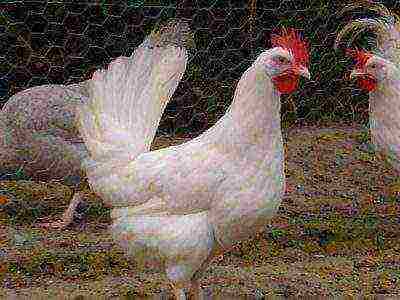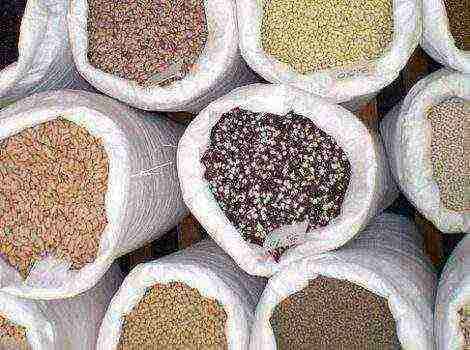Content
- 1 Growing mulard at home
- 1.1 Description of the breed of birds
- 1.2 Conditions of detention and care
- 1.3 Characteristics of adults: the weight of drakes and ducks
- 1.4 Feeding and breeding
- 1.5 Foie gras feeding mulard
- 1.6 Diseases of ducks during rearing
- 1.7 Advantages and disadvantages of the breed
- 1.8 Reviews of the domestic breed of ducks and video
Growing mulard at home
The first mention of the cultivation of mulard dates back to 1960 in France. Mulard is a hybrid of the meat direction, obtained by crossing the drakes of the musky duck (Indo-duck) and the Peking ducks.
The hybrid was created to improve the qualities of the parent breeds in order to obtain a new improved individual. Mulard cannot be found in the wild, they do not reproduce on their own and are grown only at home on the initiative of a person.
Description of the breed of birds
Mulards are big birds of white color with a black spot on the head, it is thanks to this trait that the hybrid is easy to distinguish from other ducks. Adults are larger than their parents (Peking and Muscovy duck). Torso dense, knotted, well-built, elongated, with tightly fitting wings. Head medium-sized, light beak, elongated, dark eyes, elongated neck. Short legs yellow, small tail.
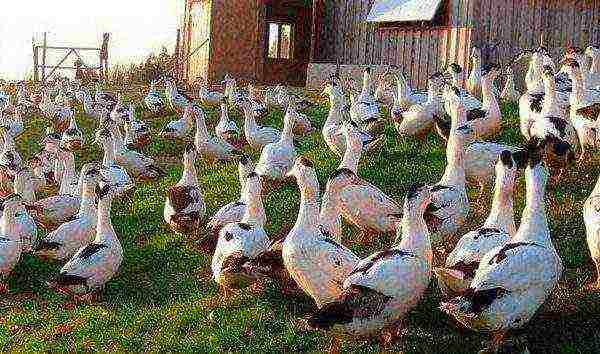
Mulard do not give offspring, therefore, these ducks are not used for breeding. Sometimes drakes are sexually active, and ducks lay eggs, but due to the fact that they cannot be obtained without fertilized offspring, this fact has been proven by many studies and experiments. Hybrids are valued for their excellent, low-fat (the percentage of fat is only 3%) meat, like the Indo-milk, without a specific smell, and a fatty large liver, which is used to prepare an exquisite meat dish foie gras. Compared to Peking ducks, mulardy are calm, not so noisy and clean.
Conditions of detention and care
Mulards are suitable for industrial and home maintenance. In an industrial setting the hybrid is grown in special poultry houses equipped with all the necessary mechanisms and technologies. Ducks are mainly used for beef feeding, and drakes are used to obtain liver. The enterprises use floor and cage keeping of poultry.
Growing in household plots mulard does not differ from the content of ducks of other breeds and crosses. In summer, it is economically profitable to keep the bird on paddocks equipped with special feeders and drinkers. At night, the ducks are herded into the barn and closed. Mulard are rarely left for the winter, since they are unsuitable for breeding, and during the season you can get a duck ready for slaughter from a duck. Due to this method of cultivation, there is no need for capital and well-insulated buildings. For the correct maintenance of mulard a simple room with good floors and no holes for rats and other predators to enter is sufficient. There should be no drafts in the barn. On the south side, a hole is made into the poultry house, the hole above the floor should be 5-8 cm and be tightly closed with a door. The poultry house should be built based on the number of ducks per 1 sq. m 3 heads. On the walk the bird should feel free, therefore 1 square meter is allocated for 1 head. m area. For feeding, use special feeders 110 cm long and 23 cm wide for adult birds, and 100x14.5 for young animals. see A partition is made on top of the feeders so that the birds do not scatter feed. It is better to use nipple drinkers for water.
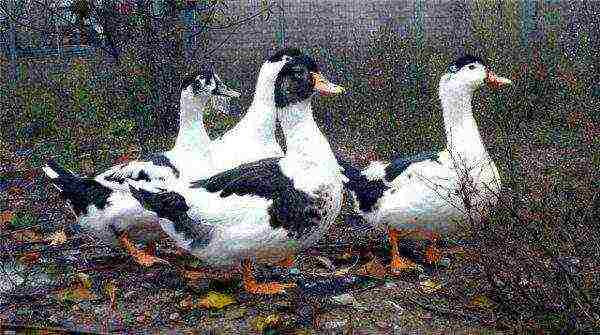
House temperature should be 16-18 ° C, with a humidity of 60-70%.The floor covering is made of sawdust, shavings or straw. The house must be regularly cleaned and ventilated.
Characteristics of adults: the weight of drakes and ducks
Mulard weight - 4-7 kg. The difference in weight between drakes and ducks is only 500 g. In 3 months the bird gains 4 kg. With long-term cultivation, the mass reaches 7 kg, almost like the weight of a goose. Liver mass mulard 500-550 g. Feed intake per day 340 g.
To obtain mulards, you can cross different breeds. Drakes of musk ducks interbreed with Peking ducks, Rouen ducks, Orgpington ducks, and Allies. As a result of such crosses, ducklings are obtained in different colors and shades.
Feeding and breeding
Since the mulard incapable of procreation, then musk and Peking ducks are used to obtain ducklings. To obtain mulards, families are created from 1 musk drake and 4-6 Peking ducks. The best age for mating is 7-10 months. Ducks begin lay an eggand in 180-210 days. About 15-20 eggs are placed under the hen.
Despite the fact that the breed is distinguished by its unpretentiousness and early maturity, certain conditions must be taken into account when breeding. When ducklings begin to appear, they are prepared habitat... Depending on the number of chicks, this can be a box or a whole room. A litter of straw or hay is laid on the floor. Under natural conditions, ducklings receive heat from their mothers, and in artificial conditions, additional sources are installed. IN first days of life the house must be provided with warmth, temperature indoors 28-30 ° C, after a few days it is reduced to 23 ° C. Lighting plays an important role in the early days and helps ducklings adapt to external conditions. For the first few days, the lighting should be around the clock. After the kids grow up a little, the lighting is reduced to 15-17 hours a day.
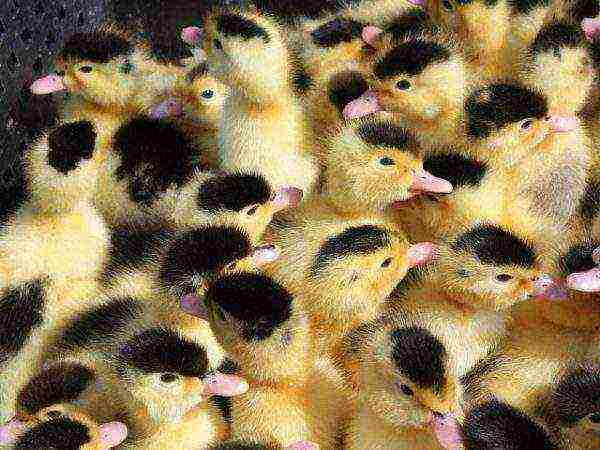
On the first day after birth, ducklings cannot eat on their own, they are used to feed them special kitssold in veterinary pharmacies. The mulards themselves begin to eat for 2-3 days. After the ducklings have hatched and dried, they are soldered a weak solution of potassium permanganate... The first feed is a hard-boiled and finely chopped egg. From day 10, well-crushed grain is added to the diet. From 10 days of age mulards are fed 2 times a day. From 2 weeks it is necessary to give duckweed. An important element when feeding ducklings is meat and bone meal and bran. To normalize calcium in the body, crushed shells are added to the diet. Ducklings need feed with mineral mixtures: chalk, limestone and shell rock. To improve digestive processes, ducks are given gravel. Ducklings should always have clean water. If possible, as an additive, it is allowed to give cottage cheese in the amount of 1 gram per head.
Ducklings diet should contain up to 20% protein, 1 kg of feed accounts for 2800 kcal of energy. After 3 weeks, the feeding scheme is chosen: intensive, extensive and semi-intensive.
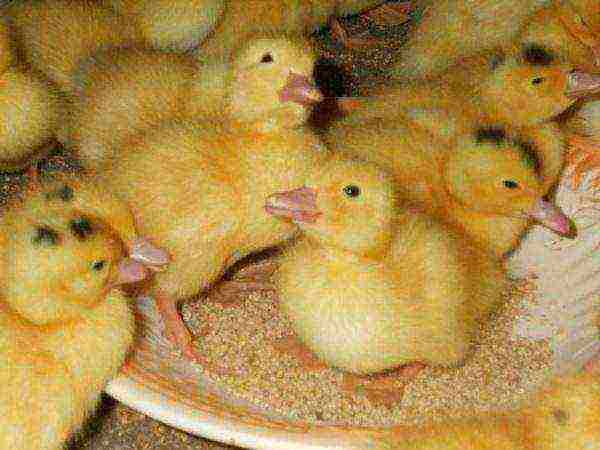
Intensive technology is feeding pellets, which must contain at least 17% protein. Semi-intensive technology is based on feeding with granular, wet and bulk feed. In the extensive method, roughage and grain are fed using food additives. From 5-6 weeks the birds are released into the pasture. Slaughter is carried out at 3-4 months, when the mulards reach the optimal live weight.
Foie gras feeding mulard
Fattening drakes to get fatty liver consists of 3 steps.In the first 3 weeks of life, the chicks are fed in the usual way. Then the bird is transplanted into narrow and small cages so that it cannot move a lot. For the next 4 weeks, the ducklings are fed a diet high in starch and protein, which contributes to very rapid growth of the bird. From 8-10 weeks of age, the forced feeding stage begins. The food is pushed down the throat using a screw with a tube, in this way the bird receives 1.8 kg of grain per day. Forced feeding lasts 12-21 days.
Diseases of ducks during rearing
Mulards are very sturdy and disease-resistant hybrids... They tolerate cold and temperature extremes well. With a normally balanced diet, the bird grows quickly and does not suffer from vitamin deficiencies. But, despite their good adaptation conditions, mularda are still susceptible to some diseases, the description of which is presented below.
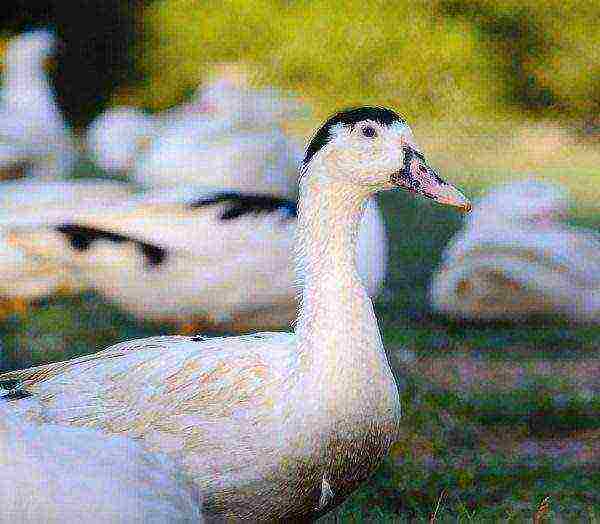
Aspergillosis
The bird becomes infected with this disease by inhaling the saw, which contains a fungus that grows in moldy straw and old feed. In 50% of cases, death occurs. Symptoms: lethargy, poor appetite, vomiting, rapid breathing, nasal discharge and paralysis of the legs and wings appear in the last stages. For the treatment of aspergillosis, a not very concentrated solution of copper sulfate is added to the water, but nystatin is added to the feed.
Plucking feathers
One of the acute problems of mulard is feather pecking. The disease occurs due to significant lack of protein in the body or adverse conditions of detention. In a small, dirty and poorly ventilated area, bird feathers become dirty quickly, which causes ducks to clean themselves much more often. In order to prevent pecking, it is necessary to balance the rations for all macro and micronutrients and adhere to sanitary and hygienic standards in the poultry house.
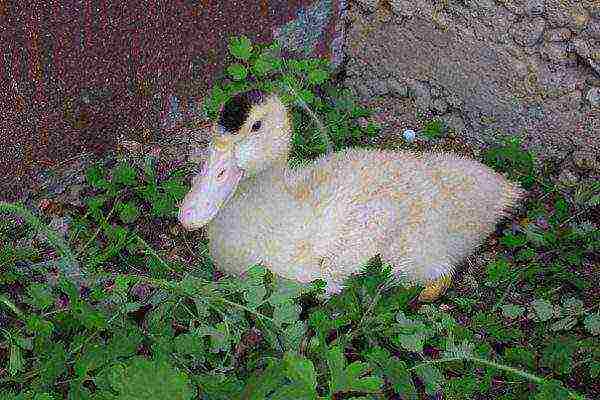
Cloacite
This disease occurs due to a lack of vitamins. A mucous membrane appears on the cloaca of the duck, and pus may appear at a progressive stage. For treatment, first of all, they clean the cloaca, lubricate the mucous membrane with an iodine solution and apply zinc ointment. If the disease is detected at the first stage, then the duck will not suffer and your farm will not be harmed.
Advantages and disadvantages of the breed
Dignity
Cleanliness. The hybrid is distinguished by its cleanliness and well-groomed appearance, thanks to this property, their fluff is widely used in industry.
Calm disposition. Unlike Peking ducks, mulards are not loud, behave calmly and do not annoy breeders with constant noise.
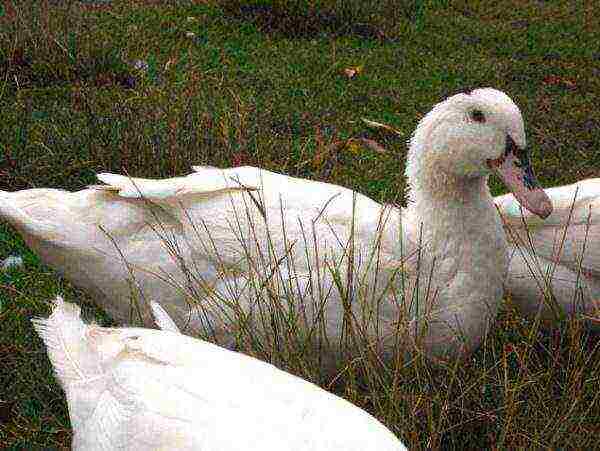
Early maturity. Mulard very quickly gain weight with standard feeding, like other ducks, and already at 3-4 months they go to slaughter.
High meat characteristics. Females are mainly used for fattening. Mulard meat is practically lean, because in the process of growth the bird accumulates only muscle mass. The meat does not have a specific smell, is soft and tasty.
Foie gras. It is the mulard liver that is used to prepare an exquisite foie gras dish. To obtain foie gras, only drakes are used; during the fattening period, the liver reaches 500-550 g.
Unpretentiousness. Mulards do not require special care, their maintenance is much cheaper than ordinary ducks. Hybrids adapt well to cold and hot climates.
Flaws
You cannot get offspring. Since mulards are hybrids, young animals cannot be obtained from them, therefore, for breeding, it is necessary to cross a musky and a Peking duck each time.
They do not tolerate dampness. This is an uncritical drawback, but it is still better to keep mulardov in dry pens to prevent various diseases.
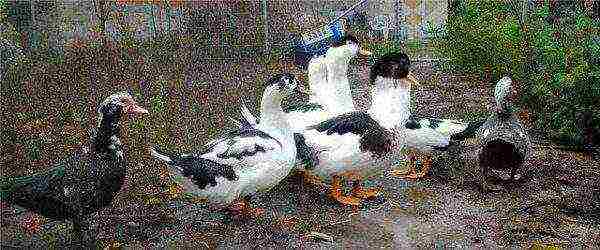
Reviews of the domestic breed of ducks and video
Breeding mulard at home is much easierthan a regular duck. You can buy eggs and put them in an incubator, or buy ducklings right away. Easy for the season a full-fledged duck grows, which can already be cut in the fall. There is a lot of meat and it is practically low-fat, it is better to cut it at 4 months, it makes no sense to keep it anymore, and the duck will be tough. Mulard feed does not consume more than Peking duck, but grows much faster and the carcass is larger. No need to build capital sheds for the winter: I bought ducklings in the spring, and killed them in the fall and no trouble. The big plus is the same weight of ducks and drakes, not that in other breeds the male is large, but in the female there is nothing to see. Mulard is ideal for home growing: fast, inexpensive and tasty.
Mulardy are, perhaps, best duck hybrid. Everyone knows their meat qualities and fast weight gain in a short time. These ducks are very unpretentious and calmly behave in the yard. Ducks by weight no different from drakes... This hybrid is used to produce large foie gras liver. They do not breed themselves, but this is a small problem, you can always buy chicks or eggs for incubation. And if there is an opportunity and time, then in subsidiary farms, families of Peking musk ducks are created and with their help you can get mulard offspring every year. Mulard - this is a great option for those who want to receive high quality and lean meat.
